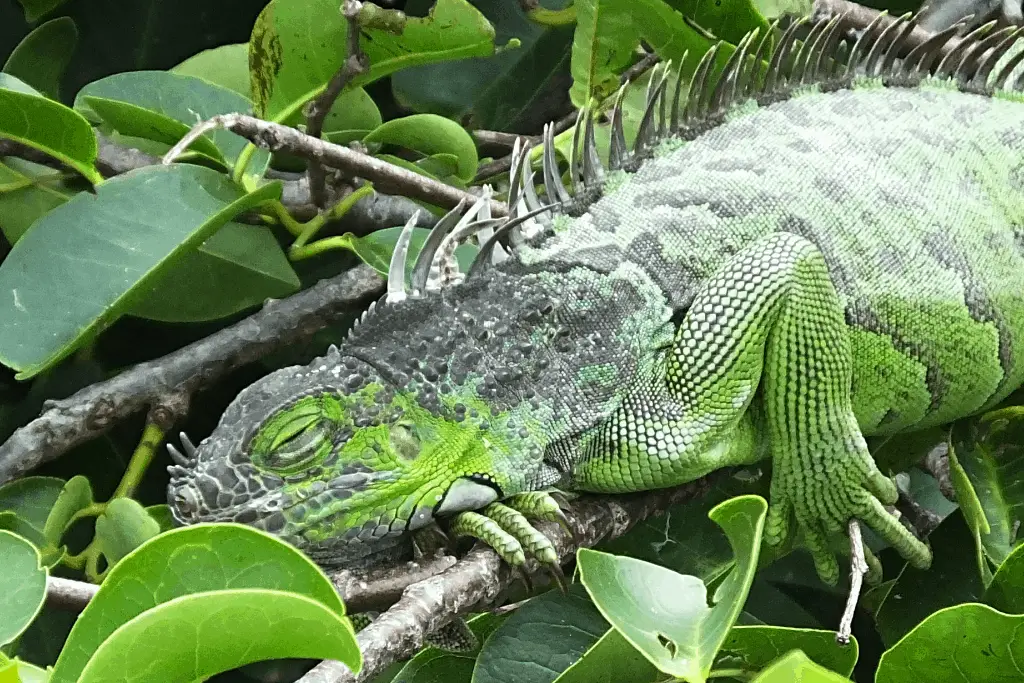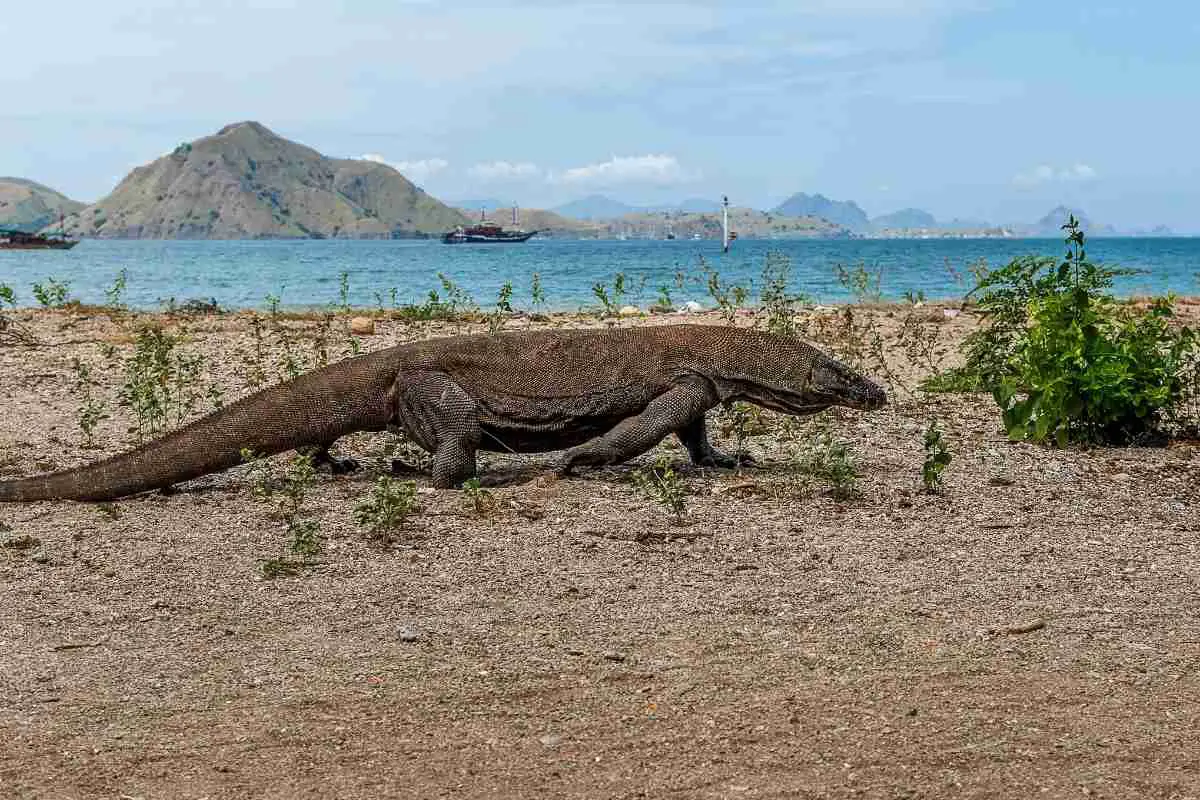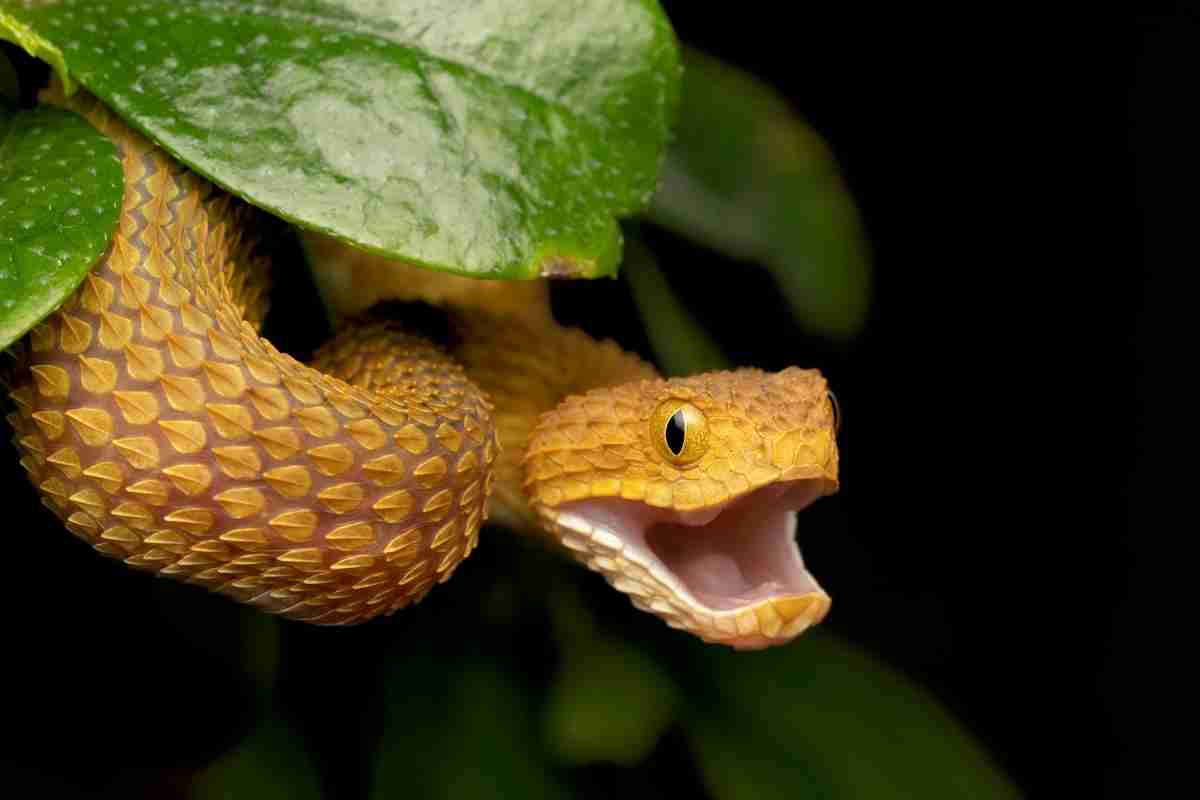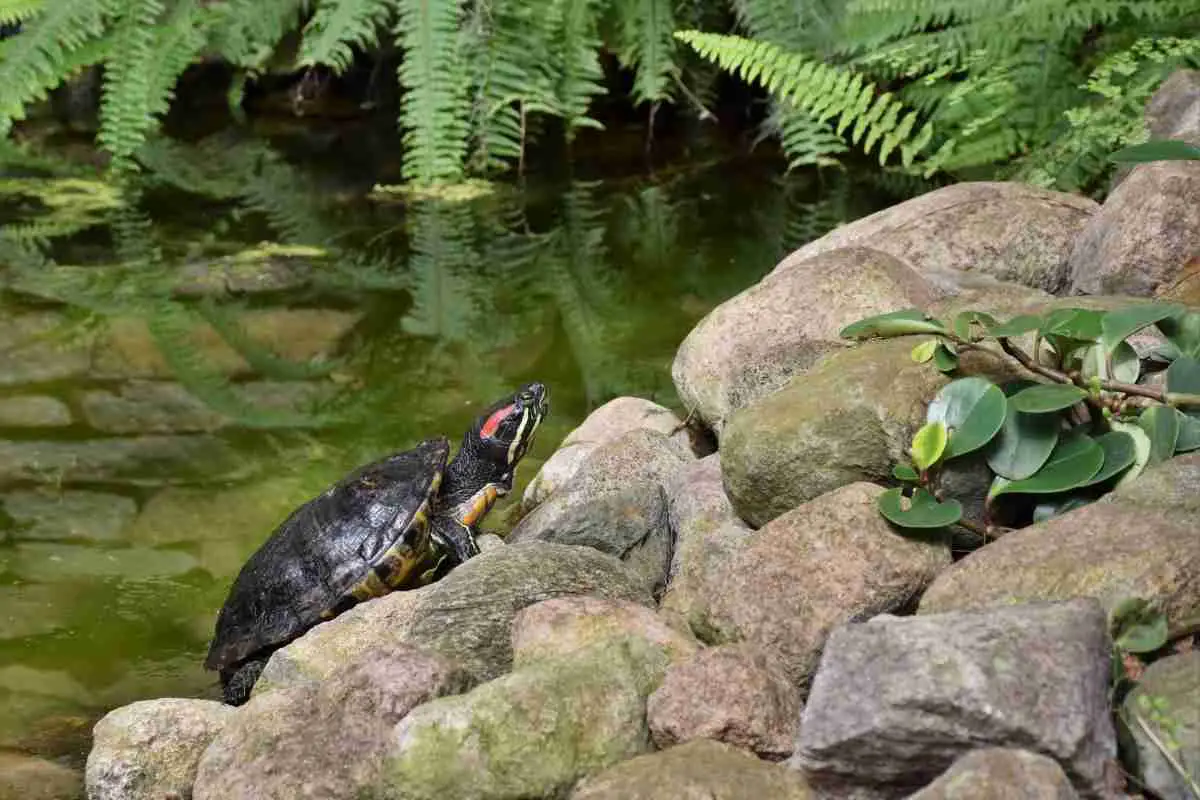Iguanas are very active when awake. They are extremely fast and agile on land, with strong jaws and razor-sharp teeth for eating things like leaves, fruits, and flowers. They are 100% vegetarian and generally prefer to live near water in the wild. But where do Iguanas sleep?
Because Iguanas are at high risk of being attacked by predators in the wild they will generally look for an enclosed area to sleep, which provides them protection from predators like birds, snakes and other carnivorous animals that are larger than them. The sleeping area will be large enough to cover the iguana’s entire body and can be anywhere from high up in a tree, under a rock, in a hole in the ground, or even under some leaves – wherever the iguana feels safe and most comfortable.
However, Iguanas that have been raised in captivity behave in a completely different manner, and because they don’t have the constant threat of predators as they do in the wild. Captive iguanas are more flexible in where they can sleep.
Where Do Iguanas Sleep In Captivity?
Iguanas in captivity tend to be much more relaxed and less wary of predators. Believe it or not, iguanas in captivity will sleep almost anywhere. In fact, some are even known to fall asleep on tree branches out in the open. That said, all iguanas have the same basic instincts, even those in captivity, and they will still seek out some cover to sleep under if startled or if the lights are too bright. But where an iguana in the wild would be more cautious and completely shield themselves, in captivity they may simply look for some light cover on a tree branch that’s heavily shaded.
Related Article
Where Do Iguanas Sleep In The Wild?
Iguanas in the wild will be much more cautious about where to sleep than those in captivity, and will be very careful when choosing a place to rest. For wild Iguanas, the biggest problem they face is finding a safe place to sleep. Although there are plenty of places to hide, some may be occupied by other animals, and some places may be less protected from predators than others, making the choice of sleeping place a potentially dangerous one.
Reptiles are very territorial and are under constant threat of predators wandering into their territory. These predators may be looking for a place to nest or something to eat and this can spell trouble for an iguana. This is the risk iguanas have to take to get a “good night’s sleep”.
Most Common Places Iguanas Sleep:
- In a small cavern
- In a hole in the ground
- Up in the trees, surrounded by leaves
- Under rocks and leaves
Do Iguanas Sleep During the Daytime Or at Night?
Iguanas typically sleep at night, between the hours of 8:00 pm and 8:00 am in the wild. They don’t actually sleep in the manner we humans would define it, though. When iguanas sleep, their heartbeat slows and they are an inactive, resting state, but at the same time, they are still aware of their surrounding conditions. This can be an advantage to an iguana in the wild, particularly with the constant danger of predators. They may be able to react and flee if under threat.
Iguanas in captivity that are much more relaxed than in the wild are known to sleep during the day or at night, and their sleep habits may have more to do with the patterns of artificial lights or other factors. Unlike the wild iguanas that have to hunt in the day for food, look for a mate, and are basically always on alert, captive iguanas can get by with different sleep patterns than those in the wild. According to some reports, iguanas in captivity can be very deep sleepers, even sleeping for a staggering 9 to 12 hours! Most do this high off the ground on a tree branch or canopy.
How Often Do Iguanas Sleep?
Iguanas in the wild usually sleep for one cycle at night, but this really depends on their size and age. When they are very young iguanas can have multiple sleep cycles. But in captivity this can vary even in large iguanas, and again as mentioned above this can be mainly due to their routine. Keeping your iguana active throughout the day will not only stop them from sleeping during the day but will also result in a better sleep cycle for the reptile.
Do Iguanas Sleep In Trees?
Iguanas in the wild spend most of their life in trees or on a tree branch resting or catching some sun. They use their powerful limbs to leap from one branch to another at extreme heights.
But do Iguanas sleep in trees?
Absolutely, Iguanas are known for climbing to the top of trees to catch some sun and taking a nap at the same time. In fact, they use their sharp claws to keep them still and secure while they sleep in the tree.
For Iguanas in captivity, they are well known for sleeping on a tree branch. However, they are unable to leap from one branch to the other unless they live in a big enough terrarium.
Even with a small household terrarium, the Iguana can still enjoy a nap on a tree branch just as long as the tree is big enough for the reptile and can hold its weight.
Do Iguanas Sleep In Water?
When Iguanas pick their territory (place to live) they will generally select a location near water. Although iguanas are primarily land animals, they are excellent swimmers.
The marine iguana, a unique and specialized species, can actually hold its breath underwater for almost an hour, but typically spends only 5 to 10 minutes underwater.
Now, there have been some cases where iguanas in captivity have fallen asleep in their water bowl, but this is usually due to the iguana being too hot.
There have been no reports of any iguana in the wild that’s been completely submerged in water while sleeping, indicating that iguanas don’t sleep in water.
Do Iguanas Sleep In The Same Spot?
When iguanas pick a spot to sleep it’s not always the same exact spot as before. That said, iguanas are territorial so they will most likely stay and sleep within the same general area. Sleeping spots are selected for their convenience, protective qualities, and proximity to other preferred habitats, so it’s likely an iguana will tend to use the same spot to sleep from time to time in the wild, but won’t restrict itself to just the one spot.
Iguanas in captivity, on the other hand, will prefer to sleep in the same spot, and this is mainly due to having limited space with suitable spots to sleep.
If a female Iguana has just laid her eggs, she is likely to sleep in the same spot (the nest) to protect her eggs from any predators that may be lurking about.
What Are The Iguana’s Sleeping Habits?
When Iguanas sleep, especially in captivity, they do have some sleeping habits. These habits can vary depending on the size and what type of iguana you have.
Eyes Will Become Twice The Size
- Some have reported when their iguana is sleeping their eyes can become twice the size, slightly bulging out under the eyelids, which typically happens when they go into a deep sleep.
Will Sleep With One Eye Open
- With iguanas in the wild, there have been some reports where they can sleep with one eye open and this again is due to the environment they live in.
Will Sleep With Their Tongue Out
- Another example (again, these are reports of iguanas kept in captivity) is that iguanas will actually sleep with their tongue out. This could be a way to keep cool, or it could simply be something the reptile feels comfortable doing.
How Does Light Affect Iguana Activity?
Iguanas in captivity tend to experience light and temperature patterns that are much different than in their natural environment. Being cold blooded, they still rely on light and the resultant heat to increase their physical activity. When iguanas sleep in the shade their temperature can drop considerably. To get warm they will need to take full advantage of any sunlight, or in captivity, an artificial light or heat source, and climb to the highest point to absorb warmth into their body.
Iguanas’ Prefered Surroundings
Iguanas are native to tropical areas of South America, Central America, Mexico and the Carribean. Interestingly, there are only believed to be two actual species in the genus: the green iguana, which is the most common and often kept as pets, and the Lesser Antillean iguana, which is far less common and in severe population decline. There are several other subspecies that are believed to be closely related to the green iguana. Iguanas have also been introduced to areas outside of their native range.
Iguanas are one of the most common reptiles to be kept as pets in households and are usually placed in a large suitable terrarium with artificial grass and trees and lights. However, the sad truth is most captive iguanas die within the first year because they have either been wrongly fed or mishandled. Many Iguanas are even turned loose and freed by their owners or given to rescue groups because they have grown too big to handle. The average iguana can grow up to 6.5 feet long and weigh in at around 11 pounds.
Daily Routine
So what does an iguana do throughout the day? Well, for one if they are not sleeping on a tree branch somewhere they will most likely be looking for food.
Iguanas spend most of their lives in the canopy, descending only to find a mate or looking for food, mainly eating leaves, weeds, flowers, and fruits.
When the day is hot enough, iguanas will also bathe in water as well as drink to keep their temperature down. But when their body temperature starts to drop they take full advantage of that sunlight.
When it starts to get dark and the heat and light are reduced this is usually when iguanas become inactive and sleep. In captivity, simply turning off the lights at night can cause your iguana to begin its sleep cycle.
Conclusion
So there you have it! We hope you have found the answer to your question about where iguanas sleep, and maybe learned a little more in the process! As you can see, there is a variety of ways iguanas like to sleep whether they are in the wild or in captivity.
The bottom line is Iguanas will naturally sleep anywhere they feel safe and most comfortable. Most like to spend their time high in the trees where they can catch some sun, while also staying within their territory. If the temperature is warm, they’ll gravitate more to shade.
If you own an iguana it’s always best to replicate the conditions of the wild as best as you can to make them feel more at home, making sure they have an artificial tree to climb on and sleep as this is second nature in the wild.
Also make sure you have a small bath for your pet iguana, so anytime they get too hot they can take a bath to help lower their temperature.
It’s very important you use UV lights in your terrarium, as iguanas need these lights to make vitamin D in their skin, which enables them to absorb calcium from their food. And you’ll want to be sure to change these lights every six months.




